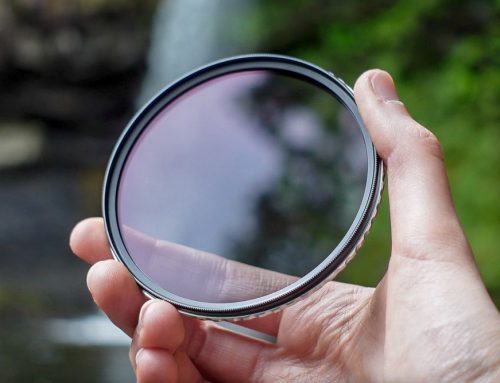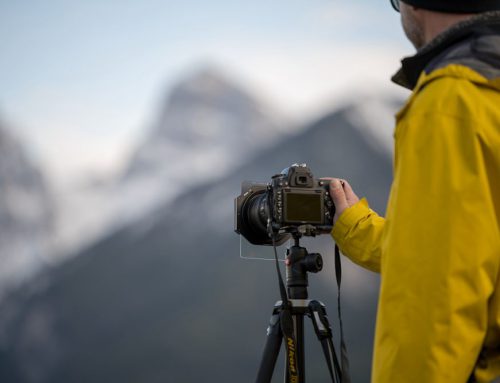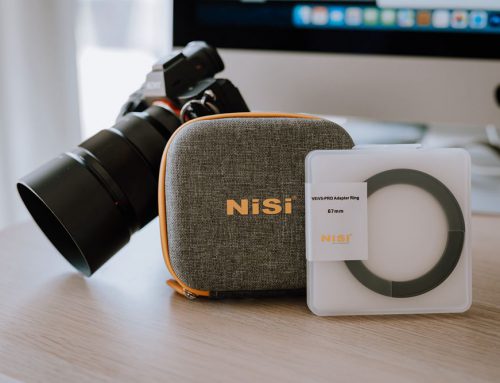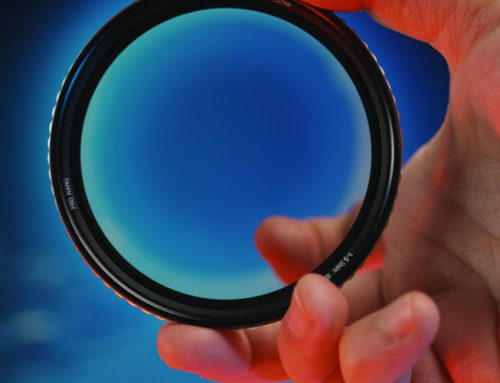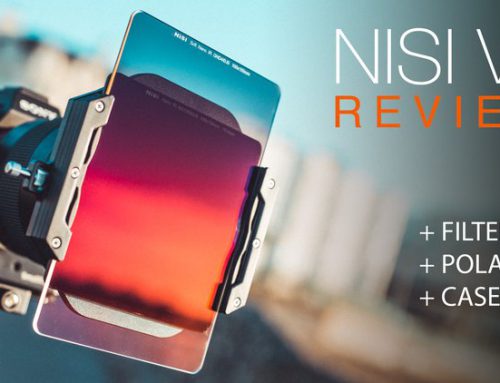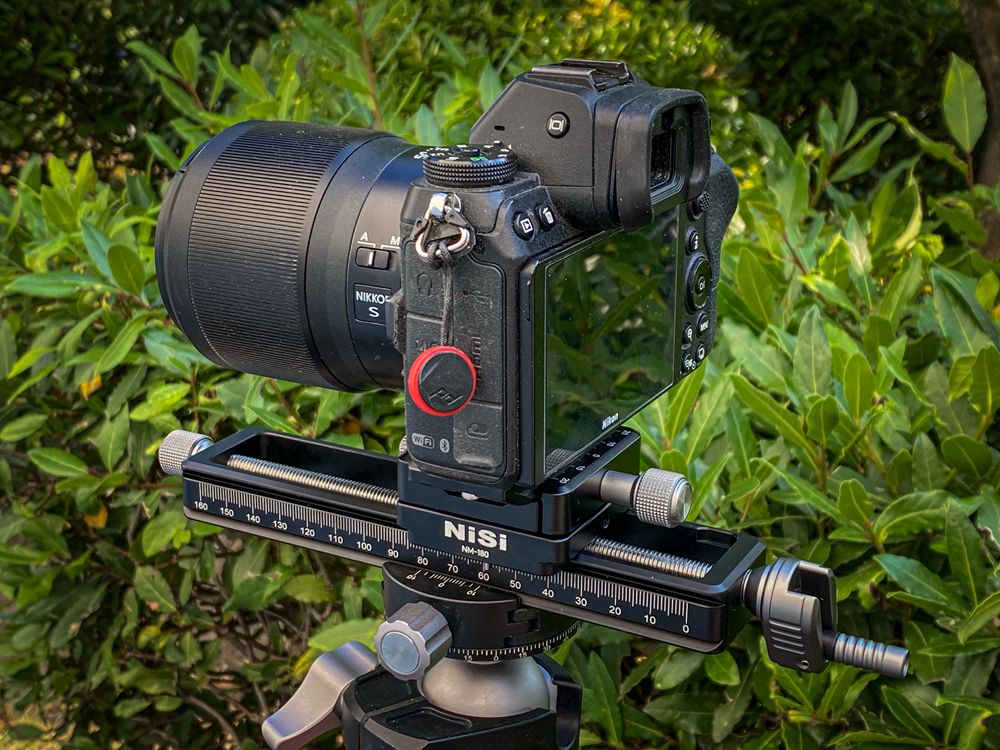
It is a really interesting period in the field of macro photography. In recent months many new and interesting products are coming out since this photographic technique is spreading a lot. This is because if before the macro was a not very simple technique and used by a niche audience now thanks to new and effective products, both as lenses and camera bodies and as accessories it is becoming increasingly manageable even for non-experts of the genre.
This is the case of the new slide of NiSi, a well-known manufacturer of high quality photographic filters that is now investing in excellent products dedicated to macro-photography.
I received the new MACRO FOCUSING RAIL, a sled that helps us a lot in focusing and in the realization of focus stacking.

Until a few years ago the only focus stacking term even for photography enthusiasts was semi unknown. Now everyone, or almost everyone, knows about this technique which allows us to extend the physical limit of depth of field. One of the greatest difficulties in macro at high magnifications is precisely the very limited depth of field, i.e. the perceived sharp part of our photography, which is increasingly reduced as the magnification of the subjects taken increases.
By realizing a focus stacking, that is the union of several shots in different focus planes, you can overcome the limit of the PDC of the single shot to have the sharpness on all our or our subjects shot.
I was a forerunner of this technique and from the beginning I understood that, especially for small subjects such as insects or flower details, multiple shots were needed to have them completely in focus and with a high detail. In fact, if we shoot with very closed apertures we extend the depth of field more but we run into a physical phenomenon called diffraction which, especially in the macro, causes us to lose a lot of definition in the images taken.
So I started taking more photos and combining them in post production. One of the first problems that came up to me was managing the focus. At high magnifications, shifting the focus a tenth of a millimeter or less can be tricky if we haven’t done much practice.
Just to eliminate this problem with our friend Roberto Aldrovandi, we built a sled that allowed very precise movements of focus by moving the entire machine instead of changing the focus with the lens ring. One of the advantages of changing the focus with a slide is the constant maintenance of the reproduction ratio or the magnification obtained by the lens. If, on the other hand, we change the focus even with a macro lens, we are also changing the magnification obtained.
With the slide, the magnification is left constant and the combination of focus staking returns images generally of higher resolution than what can be done by moving the focus physically with the ring on the lens. The focus stacking can be carried out with both techniques but with the sled the native resolution of our camera will be better preserved without final cutouts due to the crops created by the photo merging software to match the different reproduction ratios obtained in the focus stacking performed without sled.
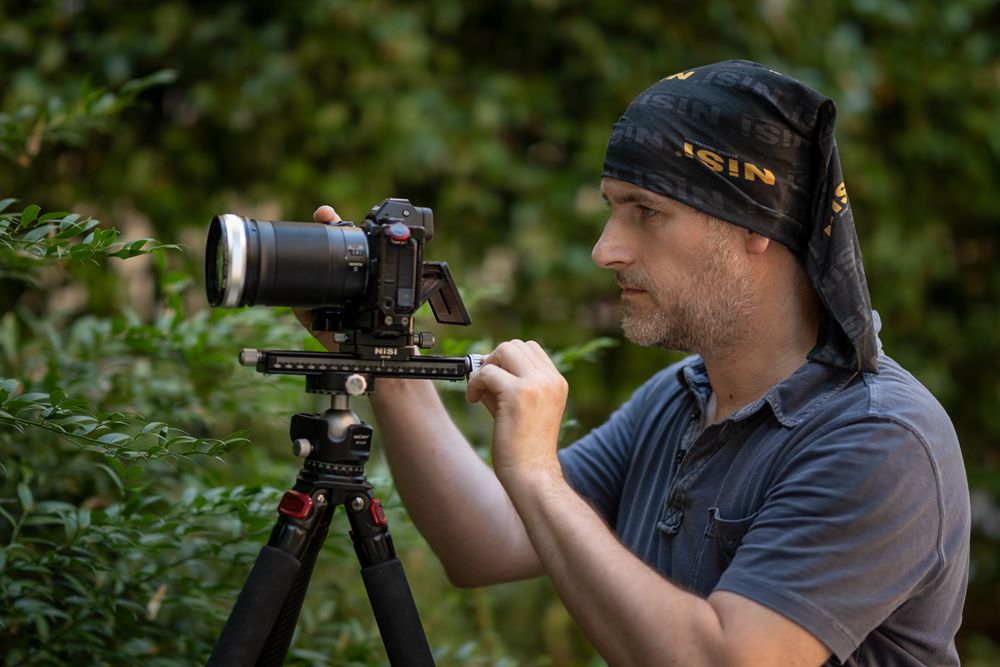
Over the years, several companies have started offering macro sleds of various kinds but have never been able to create what is the ideal sled for me. I’m not telling you how much money I threw in search of the perfect sled. Once on the market they were almost impossible to find, now instead various manufacturers have made their macro sleds.
As for the optics, the slides also have various ways of use and this NiSi is a slide made mainly for macro subjects from small to very small, being equipped with an endless sliding screw. This allows the focus plane to be moved with extreme precision. With other types of slides, for example those with a rack, the change of the focal plane is done much faster but with less precision and therefore there is a risk of missing focus planes between the various shots.
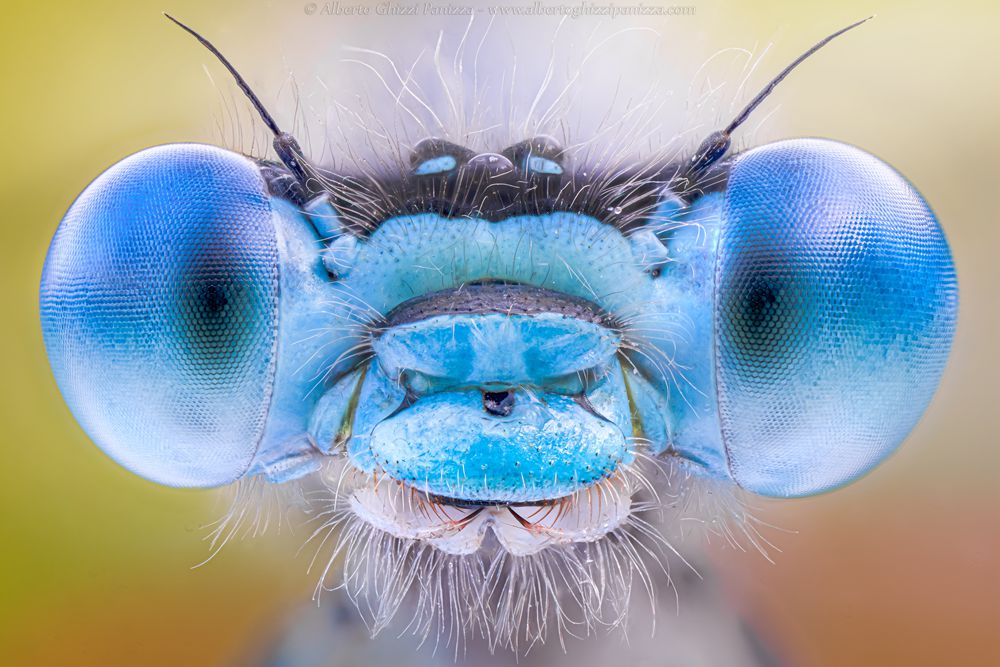
Starting to analyze the macro NiSi slide, you can immediately notice the high quality of the product starting from the packaging. This in fact has foam shapes that contain and protect the slide and inside we also find the camera attachment plate made with the Arca Swiss standard and a protective bag for when we will transport the slide together with the rest of our photographic equipment.
The sled to the touch is robust and well cared for. It is entirely in metal like the plate for the camera. The length is 18 cm and its field of use or its extension for the realization of focus stacking is 160mm, well above my generic field of use. When I do focus stacking of insects or very small subjects I generally do not exceed 50mm.
The advancement of the slide is clearly visible with a millimeter scale and with a small marker under the plate indicating the millimeter on which it is positioned.
The sliding of the slide is managed by a metal knob located at the beginning of the slide. This is also equipped with a retractable knob that facilitates rotation if we have to make rapid movements.
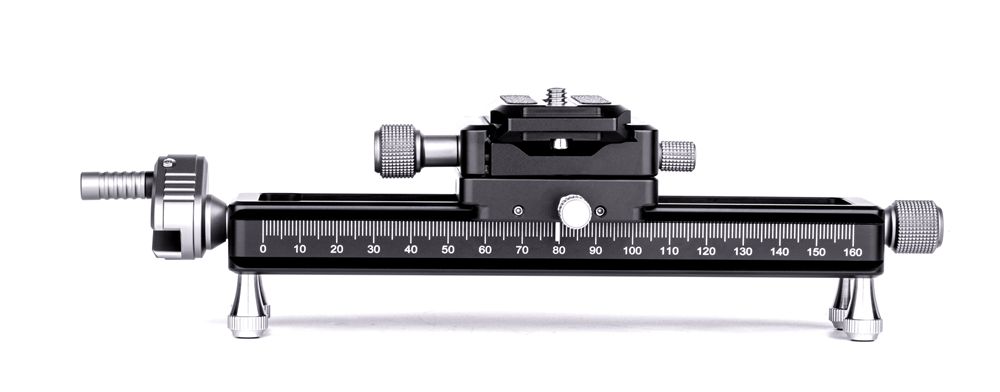
Normally a micrometric slide like this must be positioned on the stand and even better if we have a micrometric head together with the stand. The type of attack is always Arca Swiss. If we are not equipped with this attachment, we can always screw the slide over the stand or onto another plate using the classic thread. NiSi has also thought of inserting an adapter inside the attachment hole in order to use both the 3/8 “and 1/4” standards.
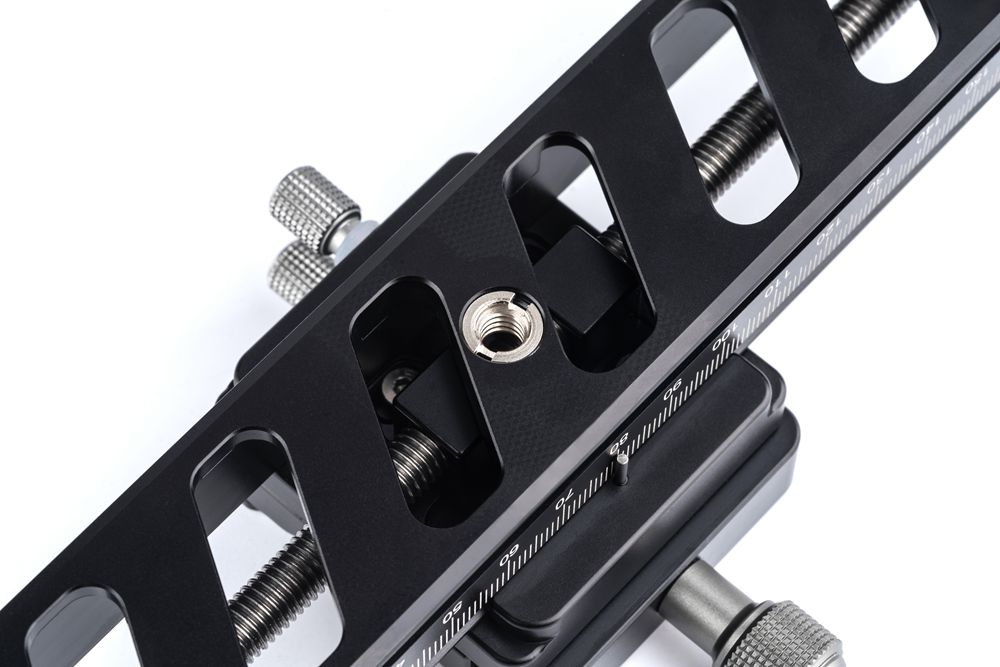
The ideal always remains to use the Arca attachment which allows us to quickly position the sled at the distance that best suits us from our subject and then use the front knob for precision focusing and for any focus stacking.
NiSi has also thought of using the sled above a support surface and for this reason it has equipped the sled with 4 feet that can be screwed under it to be able to rest and use it without a stand.
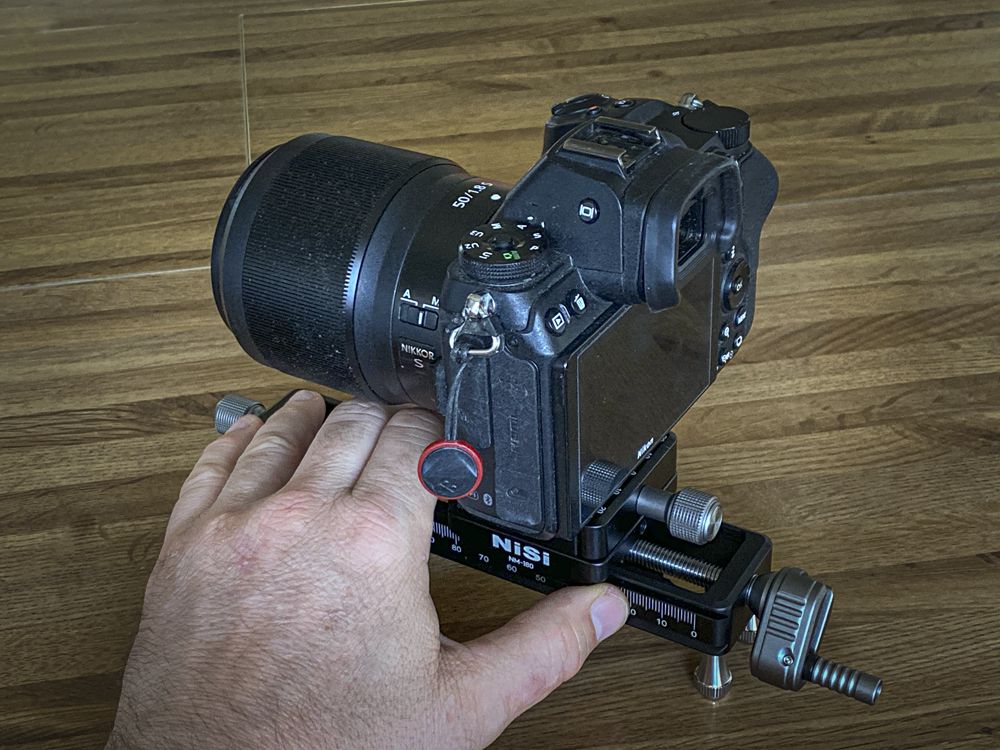
A technique for realizing focus stacking is in fact to move the machine back and forth resting it on a table, but obviously with a slide like this the micro movements are much simpler than what we could do simply by placing the camera on the table.
The sled also has a 360 ° rotatable attachment head giving us much more freedom in attaching the camera and using it.
The head also has a millimeter scale that extends 20mm both in one direction and the opposite.
With the rotating head and with the sliding plate, also move the machine laterally to improve the framing of the subject or to create a mosaic of images to increase the resolution of the final image.
The plate supplied (not always in the sleds of other brands we find in the package the attachment plates to the camera which must be paid separately) in the package is made very well, with a beautiful screw anchoring to the camera that can be mounted either by hand or through Allen.
The support part to the camera has two rubber shapes that allow not to mark or scratch the rear of the camera and increase its grip.
Wanting to look for some defects, the worm screw, like all the other sleds I have tried, has a slight greasing and if we dirty or dust the sled it could knead making the sliding less fluid.
By purchasing 2 sleds we could create a sophisticated bunk sled with sliding on two axes.
The price is really very good and at the moment it is € 119 on the official website www.nisifilters.it
I take this opportunity to say that NiSi has also presented a new version of the now known close-up lens for converting normal optics into macro with a 58mm thread.
The performances are the same as the 77mm older sister but it has a lower cost and is more suitable for optics with 58mm or less threads. The kit also includes adapter rings for 52mm and 49mm lenses.
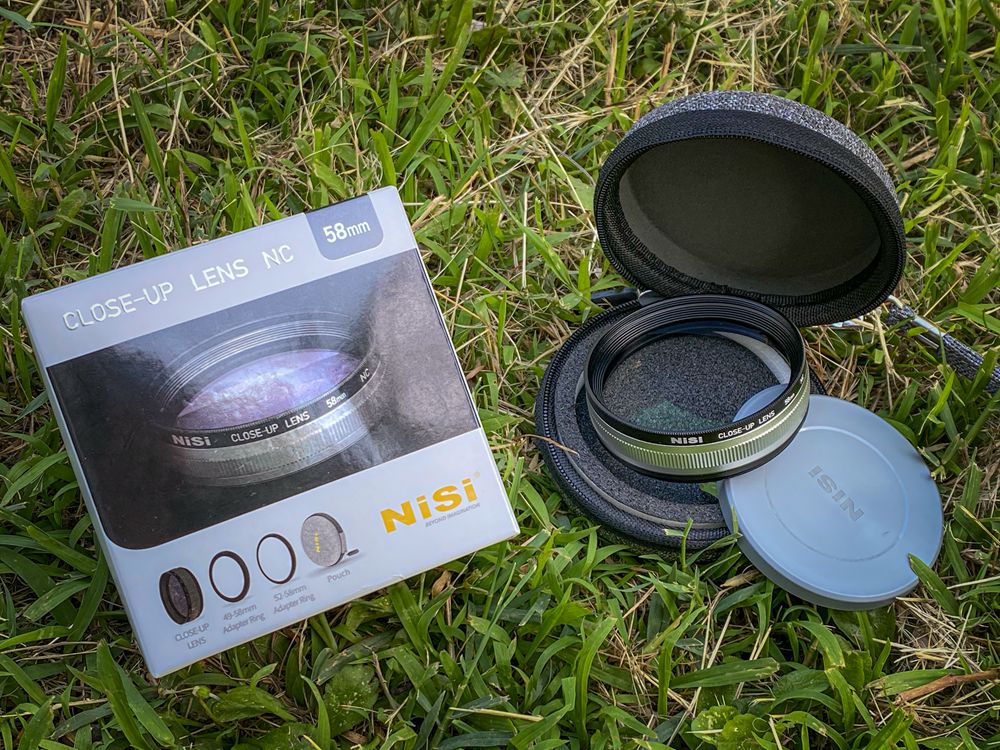
The complete review of the 77mm model can be found here:
Prova Nisi Close Up Lens
The original review link : NiSi Macro Focusing Rail

